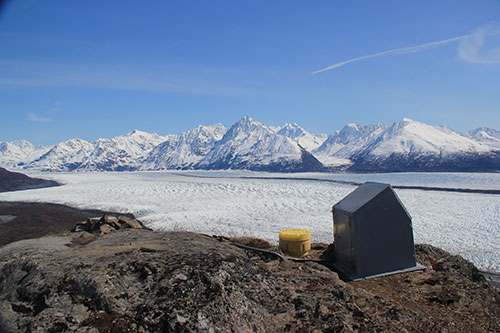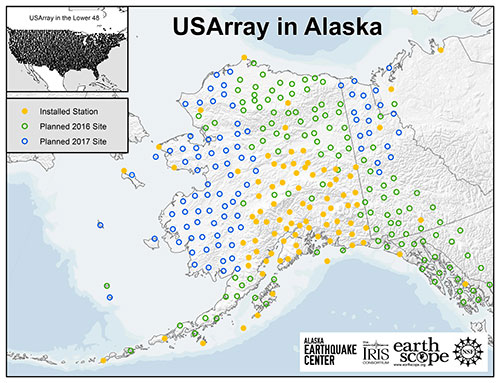
Alaska benefits from growing number of seismic stationsBy SUE MITCHELL
September 23, 2015
The instruments were installed in Southern and Interior Alaska as part of the EarthScope Transportable Array deployment, a $40 million, 5-year, temporary National Science Foundation-funded project. Scientists plan to eventually install about 260 sites.
An example of a remote Alaska Transportable Array seismic site. “The ability to rapidly assess how big, what kind, and where an earthquake occurs is entirely dependent on the arrangement of stations recording it,” said Michael West, Alaska state seismologist and director of the Alaska Earthquake Center at the University of Alaska Fairbanks. The transportable array’s instruments measure vibrations that are imperceptible to humans, gleaning immense amounts of information about the Earth. The statewide endeavor is assisted by the cooperative efforts of state and federal landowners, as well as the Alaska Native regional, village and tribal corporations working in partnership with the EarthScope project and Alaska Earthquake Center.
Transportable Array map showing current and planned stations.
The project has also improved tsunami warning services. “Alaska earthquakes are responsible for many of the country’s most damaging tsunamis,” said Paul Whitmore, director of the National Oceanic and Atmospheric Administration’s National Tsunami Warning Center. “The new array provides information which improves the speed and accuracy of the center’s critical initial evaluation.” The 2016 deployment will focus on the North Slope region of Alaska, while the 2017 deployment will look at western Alaska. These large regions have had limited, if any, seismic study. “The existing stations are so spread out or nonexistent that we are missing information,” Scher said. “The array will increase our information by orders of magnitude through the additional coverage. The longer the instruments are out, the better our ability to plan for damaging earthquakes.” The temporary deployment will help to shed light on earthquakes in areas of the Arctic that are of tremendous recent interest for resource exploration and infrastructure development. Scientists also hope for insight into puzzling earthquake sequences, such as the 2014 Noatak swarm. The university is seeking funding to continue operation of the stations after 2018; otherwise they will be removed.
On the Web:
Sue Mitchell [sue.mitchell@alaska.edu] UAF Public Affairs, University of Alaska Fairbanks. This article is provided as a public service.
|
||

